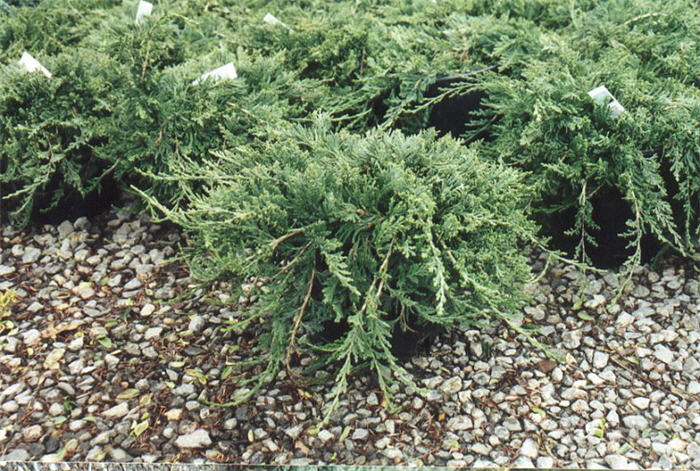| Botanical Name: Juniperus horizontalis 'Wiltoni' | |
| Common Name: Wilton Juniper |

-
Anatomy
-
Culture
-
Design
Plant Type
Conifer, Shrub, Ground cover
Height Range
Under 1'
Flower Color
n/a
Flower Season
n/a
Leaf Color
Blue Green, Silver
Bark Color
Grey
Fruit Color
n/a
Fruit Season
n/a
Sun
Full
Water
Low
Growth Rate
Fast
Soil Type
Sandy, Loam, Rocky, Unparticular
Soil Condition
Average, Rich, Poor, Well-drained, Dry
Soil pH
Neutral
Adverse Factors
n/a
Design Styles
Formal, Japanese, Mediterranean, Ranch, Seascape, Spanish
Accenting Features
Fall Color
Seasonal Interest
Winter, Fall
Location Uses
Entry, Shrub Border, Parking Strip, Patio, Park, Parking Lot, Raised Planter, Swimming Pool, Walls / Fences, With Rocks
Special Uses
Cascade, Erosion Control, Filler, Mass Planting, Small Spaces
Attracts Wildlife
n/a
Information by: Stephanie Duer
Photographer:
Photographer:
-
Description
-
Notes
Wilton juniper is valued for its silver, blue-green, evergreen foliage which remains a constant blue color through winter. It quickly spreads 6 to 8 feet wide, only reaching 6 inches or so in height. It is useful on slopes and when draped over walls, and looks great in rock gardens.
Grow in any soil that is well draining, including sandy, gravelly, or clay soils, but they must be well draining. Best growth in full sun. Once established, it tolerates dry soils and heat. Avoid shearing, as that will made the juniper woody and stiff; instead, prune selectively if necessary (see Guides). Also listed as J. h. 'Blue Rug.'